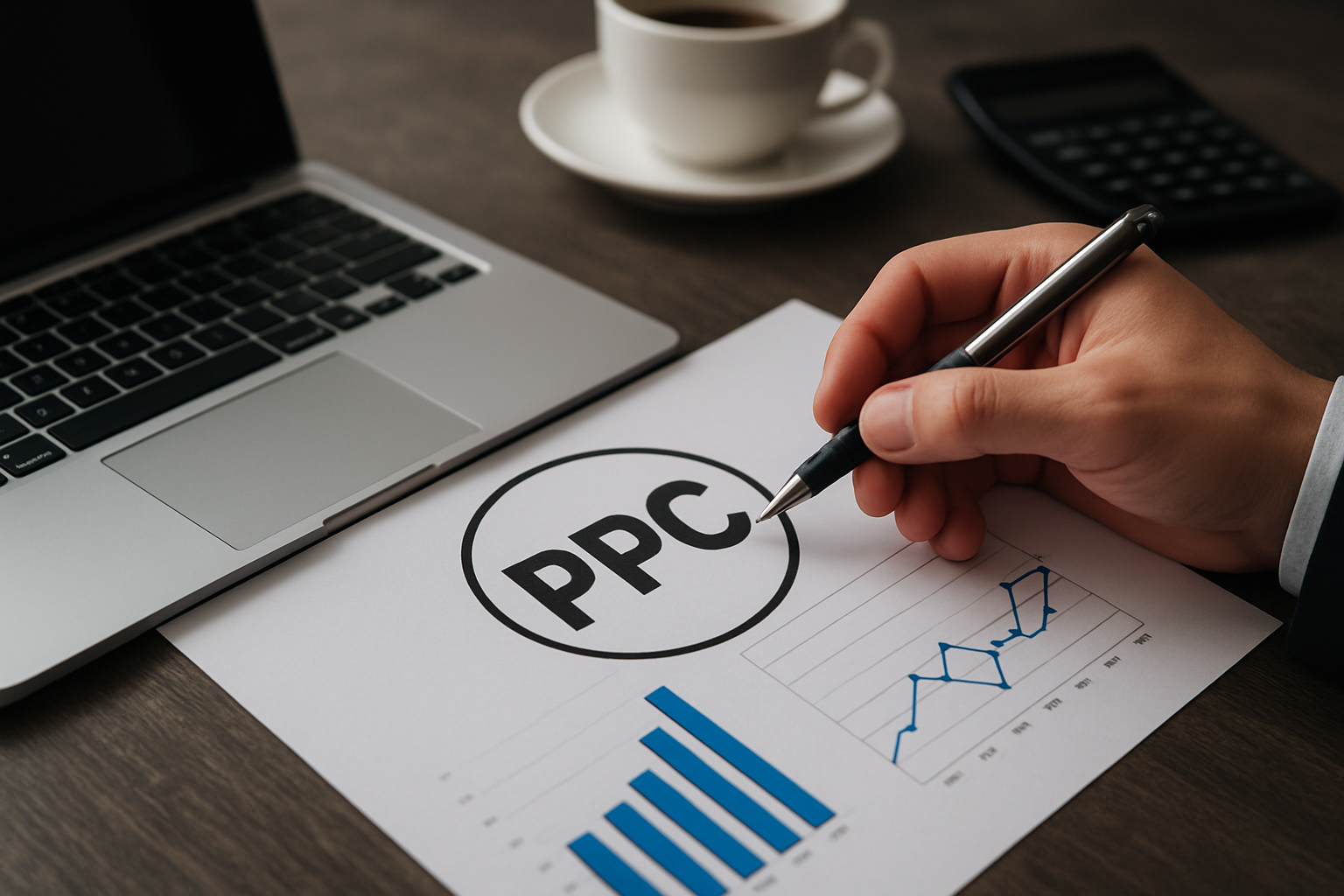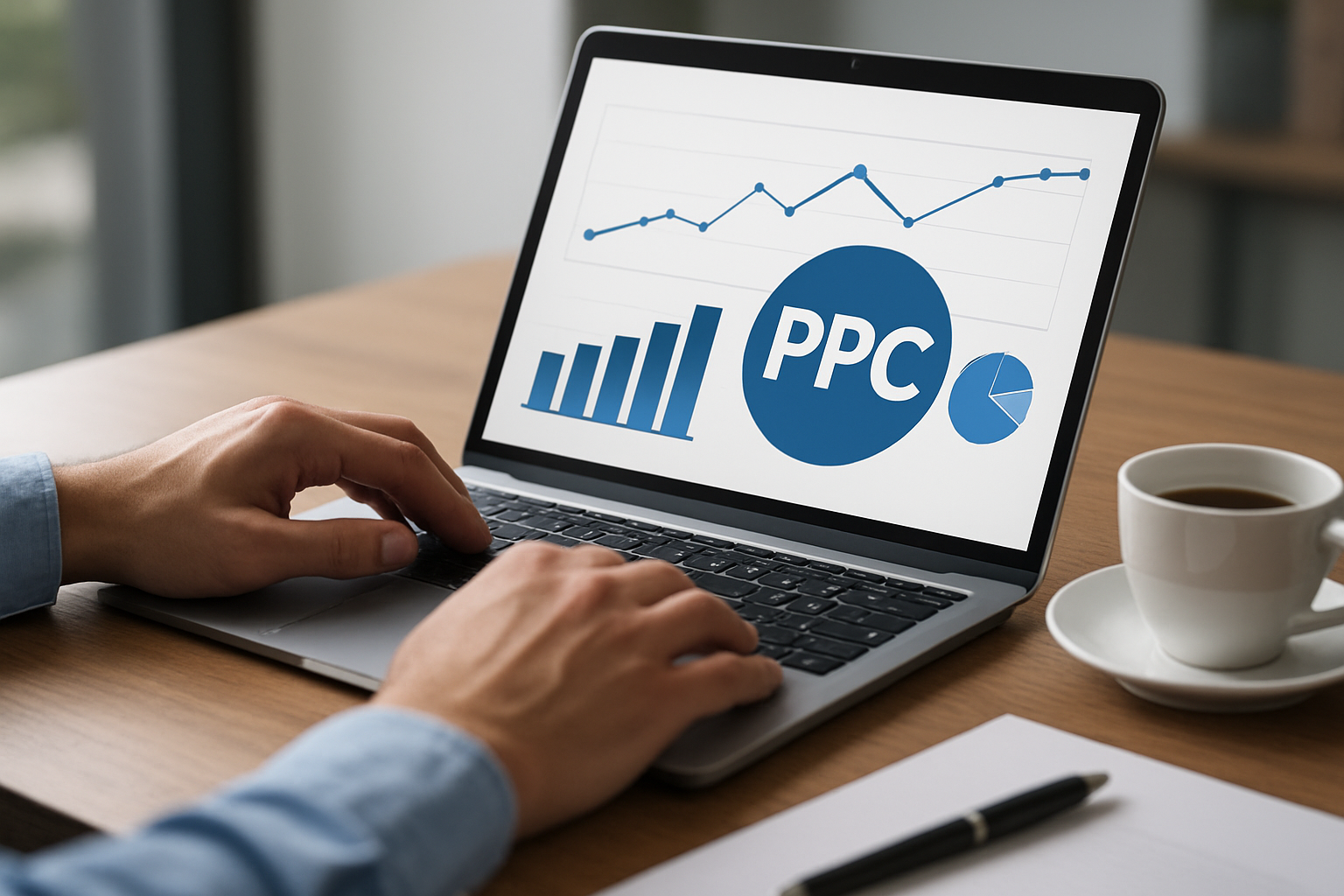If your pay per click campaign feels like a leaky bucket, you are not imagining things. I have audited hundreds of accounts and seen the same pattern: strong impressions, plenty of clicks, and then that uncomfortable silence where sales are supposed to be. The culprits are surprisingly consistent too, from fuzzy tracking to broad keywords that invite the wrong traffic. The good news is you can stop the bleeding fast with a few focused fixes, and when we pair ads with smart search engine optimization, results compound. At Internetzone I, our Adwords-Certified PPC Services (pay per click) team loves nothing more than turning waste into wins by bridging pay per click, search engine optimization, and conversion design so every dollar works harder.
How a Pay Per Click Campaign Springs Leaks (And Why You Don’t Notice)
Budgets usually leak in five places: measurement, targeting, keywords, creative, and landing experience. Measurement leaks happen when you are not tracking the right conversions or you are counting the wrong ones, which forces your bidding to chase vanity clicks instead of revenue. Targeting leaks show up as clicks from the wrong people, places, or times, like job seekers, DIY searchers, or out-of-area visitors who never could buy. Keyword leaks are the silent killers, as broad matches can match to shockingly irrelevant searches. Creative leaks waste attention with vague headlines or no message match, while landing experience leaks come from slow load speeds, weak trust signals, and forms with too many fields. Each leak is painful alone, but together they create a compounding drag that hides real potential.
Why do teams miss these leaks for months? First, platform defaults favor volume over precision, and it is easy to accept recommendations that look helpful but dilute intent. Second, reporting often blends channels and goals in ways that mask underperformers with top-of-funnel noise. Third, account access can be fragmented across agencies and in-house members, which makes accountability fuzzy. I once reviewed an account for a regional service brand where out-of-area clicks consumed 29 percent of spend; a 30-minute geo cleanup freed budget for top-converting suburbs and reduced cost per acquisition by a third. You do not need massive overhauls to get meaningful improvements. You need small, sharp moves that remove friction where it matters most.
| Leak | Symptom You See | Likely Cause | First Move |
|---|---|---|---|
| Measurement | High clicks, low sales | Missing or mis-weighted conversions | Set up primary conversions and import offline wins |
| Targeting | Lots of irrelevant inquiries | Loose audiences, no exclusions | Add in-market audiences and exclude job seekers |
| Location | Calls from outside service area | Broad geo targets or presence settings | Use radius targeting and exclude non-service regions |
| Keywords | Search terms unrelated to offers | Broad match with weak negatives | Shift to phrase and exact with robust negative lists |
| Creative | Low click-through rate | No message match to query | Mirror top keywords in headlines and use ad extensions |
| Landing | Good clicks, few leads | Slow pages, frictiony forms | Compress media, simplify forms, add trust proof |
Fixes 1–4: Tracking, Targeting, and Attribution That Finally Make Sense
1) Repair Conversion Tracking and Weigh What Actually Matters
Watch This Helpful Video
To help you better understand pay per click campaign, we’ve included this informative video from Digital Authority Partners. It provides valuable insights and visual demonstrations that complement the written content.
Start by auditing every conversion in Google Ads and Google Analytics 4, and decide which ones are primary revenue drivers versus helpful micro-actions. A form submit, a qualified phone call over 60 seconds, and a paid order should typically be primary; a brochure download or video view is supportive, not the goal. Import offline conversions from your customer relationship management (CRM) system so the platform learns which leads turn into revenue, not just appointments. Then enable enhanced conversions and use data-driven attribution to give fair credit to assist clicks that help the sale. When advertisers weight conversions properly, we routinely see machine learning prioritize higher-intent queries, boost the click-through rate, and reduce cost per acquisition within a few weeks because the system finally understands what a real win looks like.
2) Build Intent-Based Audiences and Tough Exclusions
Layer audiences like in-market, detailed demographics, remarketing lists, and customer match so your ads appear to buyers who are actually shopping, not browsing out of curiosity. Just as important, add exclusions for career, education, and research categories if you are not recruiting or selling training, and exclude your own employees and vendors using email lists where appropriate. For service businesses, suppress recent converters for 30 to 90 days so you are not paying to reach customers you already won. This approach is especially powerful when you combine it with Internetzone I’s National & Local SEO (search engine optimization) strategy, because your audience targeting in ads can echo the same city, service, and intent signals your organic content is capturing. The result is a coordinated presence that shows up everywhere high-intent buyers look.
3) Tighten Location and Presence Settings
Most local and regional accounts overspend simply because their geo settings are too loose. Use radius targeting around stores or service areas, and choose the presence option that targets people in your locations, not people showing interest in them from far away. Exclude delivery or service dead zones and suppress airports, college campuses, and military bases if your offer does not fit those contexts. If you have multi-location operations, split campaigns by region so budgets are not cannibalized by the largest city. Internetzone I’s web design team builds location pages that align one-to-one with campaigns, which creates perfect message match and raises conversion rates when visitors land. That alignment alone can reduce cost per acquisition by double digits because every click lands on a page designed for that specific place and promise.
4) Add Call Tracking and Qualify With Real Conversation Data
Phone calls often convert two to four times higher than web forms in service and high-ticket businesses, yet many accounts treat calls like an afterthought. Implement dynamic number insertion and import call outcomes back into your ad platform so the system optimizes toward conversations that become revenue. Create call-only or call-enhanced campaigns during the hours when your team answers live, and route after-hours calls to voicemail with clear next steps. Analyze call transcripts to find recurring objections and then address them in landing page copy and ad extensions. When clients see which keywords and locations drive booked appointments on the phone, budgets shift quickly to winners. That is how you go from random call volume to reliable pipeline, guided by actual human intent captured in conversation.
Fixes 5–7: Keywords, Negatives, and Ads That Convert
5) Use Match Types With Guardrails and Graduate Broad Carefully
If you are using broad match keywords without serious controls, you are likely funding searches you never intended to. Start with exact and phrase to protect intent, then test broad only after you have strong negative lists and clear conversion signals. Group closely related keywords into tight ad groups so your headlines can mirror the search terms and improve relevance. For national brands with large datasets, broad can work well when paired with robust first-party audiences and value-based bidding. For everyone else, precision first, expansion later. This discipline is boring and wildly effective, and it becomes even more powerful when your search engine optimization content supplies the same keyword themes, which reinforces relevance in both paid and organic results.
| Match Type | Pros | Cons | Best Use |
|---|---|---|---|
| Exact | Highest intent, clean data | Lower volume | Core money terms and brand protection |
| Phrase | Good balance of volume and control | Can pull in adjacent searches | Discovery around themes you know convert |
| Broad | Scale and new queries | Risk of irrelevant matches | Advanced accounts with strong negatives and conversion signals |
6) Build and Maintain Ruthless Negative Keyword Lists
Negatives are your moat. Start with a master list that blocks career, free, DIY, cheap, definition, and competitor support queries you do not serve. Then use the search terms report weekly to add fresh negatives at the ad group and campaign levels. If you sell premium products, consider blocking bargain-leaning modifiers; if you sell repairs, block searches that indicate replacement when you do not offer it. For multi-location accounts, add city names you do not serve to prevent cross-region waste. Internetzone I maintains negative libraries by industry from years of audits, which speeds up the cleanup dramatically. A single afternoon of negative work can recover 10 to 30 percent of wasted spend in many accounts, which you can reallocate to the exact terms that already convert.
7) Make Ads Mirror Search Intent and Use Every Relevant Extension
Ads win or lose attention in a blink, so make your headlines mirror the exact wording buyers use. If the query is “emergency plumber near me,” the ad should literally say “Emergency Plumber Near You in [City]” and promise a clear next step like “Technician at Your Door in 60 Minutes.” Use sitelinks, callouts, structured snippets, price extensions, and location extensions to expand real estate and answer unasked questions. Test one variable at a time with a one-in, one-out rhythm so you learn what actually changed performance. When your ad copy matches the landing page headline and trust proof below the fold, you create an effortless path to action. That alignment can lift click-through rate and quality score, which lowers cost per click and increases qualified traffic simultaneously.
Fixes 8–9: Bidding, Budgets, and Automation Without Guesswork
8) Align Bidding Strategy to Profit, Not Vanity Metrics
Choose bidding strategies based on business math, not platform defaults. If your goal is efficient lead volume, test target cost per acquisition and give the system at least 30 to 50 real conversions per month to learn. If you sell online, use target return on ad spend and feed accurate revenue values, including phone orders and repeat purchases where possible. For thin data sets, start with manual or maximize conversions while you build volume, then graduate to automated strategies. Use portfolio bidding to let high performers subsidize learning in new segments without risking the entire account. Internetzone I often pairs value-based bidding with search engine optimization content that attracts buyers earlier in the journey, which steadies demand and makes bidding algorithms less jumpy when the market fluctuates.
9) Reallocate Budgets by Hour, Device, and Region
Not all clicks are created equal, and your budget should reflect that. Pull performance by hour of day and day of week, then shift spend into the blocks where conversion rate spikes and reduce bids where intent fades. For many service businesses, weekday mornings dominate, while late-night mobile clicks are exploratory and rarely convert. Analyze device performance to determine if desktop buyers deserve more weight, or if mobile converts strongly once landing pages load fast and present sticky calls to action. Split campaigns by region so you can pour more budget into suburbs or cities with the strongest close rates. These granular reallocations rarely require new creative or keywords, yet they can transform the shape of your results in a single billing cycle.
Fixes 10–11: Landing Pages, CRO (conversion rate optimization), and Speed
10) Build Landing Pages That Remove Friction and Prove Trust
Your ads buy attention, but landing pages close the deal. Lead with a headline that repeats the promise in your ad, place the primary call to action above the fold, and add a short subheadline that clarifies the benefit. Show social proof early with review stars, logos, or a short testimonial, and use a handful of bullet points to answer the top objections. Cut the form to the fewest fields you can live with and add a progress cue if the process has two steps. Compress images and preconnect critical resources to shave load time, because even a half-second improvement can lift conversion rates by double digits according to multiple industry studies. Internetzone I’s web design and eCommerce solutions teams build mobile responsive, search-friendly pages that are engineered for speed and action on every device.
11) Protect Your Budget From Click Fraud and Spam Leads
Every account should assume some level of junk traffic and have defenses in place. Activate built-in invalid click protections, layer on reputable third-party fraud filters, and add Internet Protocol addresses and placement exclusions when you spot patterns. Use reCAPTCHA on forms, require email verification on high-value requests, and record multi-touch visitor fingerprints to catch bots before they hit your database. For call campaigns, consider whisper messages and call screening during peak spam hours. Regularly audit the placements report on display and Performance Max to block low-quality sites and apps. These protections are not glamorous, but they keep your data clean and your budget focused on real buyers, which is the foundation of reliable scaling.
Proof of Impact: A Real-World Turnaround With Internetzone I
A multi-location home services client came to Internetzone I after spending heavily with flat growth. Our audit found three major leaks: broad keywords without negatives, calls not tracked as conversions, and a 5.2 second mobile landing page load time. We shifted core terms to phrase and exact, added a 300-word negative list by industry, enabled dynamic call tracking with revenue import from the customer relationship management system, and rebuilt location landing pages with a lighter framework. Within 60 days, cost per acquisition fell 38 percent, qualified calls rose 61 percent, and total booked jobs increased 27 percent on nearly the same spend. The kicker: by pairing the new ad structure with National & Local SEO (search engine optimization) content that answered service-specific questions, branded search demand rose, further reducing blended acquisition costs across channels. Results vary by market, but the pattern is repeatable because the fixes are fundamentals done well.
SEO + PPC Synergy: Why Internetzone I Is Built for the Full Funnel
Paid and organic search work better together because they share the same intent signals. Internetzone I delivers that synergy end to end: National & Local SEO (search engine optimization) to win rankings where buyers look, Adwords-Certified PPC Services (pay per click) to capture demand right now, web design that is mobile responsive and designed for conversion, eCommerce solutions for frictionless checkout, and reputation management to keep your stars shining when prospects validate your credibility. Managed web services keep the stack secure and fast so no technical hiccup robs you of revenue. When every component shares data and goals, you get a growth engine that compounds. That is the difference between hoping for more leads and engineering a system where improvement is the default outcome.
From Budget Bleed to Profitable Growth: What Happens Next
The promise is simple: plug the leaks, realign intent, and your ads start buying outcomes instead of clicks. Imagine the next 12 months with clean data, precise targeting, fast pages, and a steady stream of buyer conversations that your team can actually close. What would that predictability do for your forecasts, your hiring plan, and your market share?
If you are ready to scale smart, picture your pay per click campaign working in lockstep with National & Local SEO (search engine optimization) so you dominate the moments that matter. Which fix will you tackle first to stop the waste and unlock your next growth leap?
Additional Resources
Explore these authoritative resources to dive deeper into pay per click campaign.
Scale Your Pay Per Click With Internetzone I
Amplify your pay per click campaign using National & Local SEO (search engine optimization) to drive qualified traffic, strengthen reputation, and grow conversions with Internetzone I.


